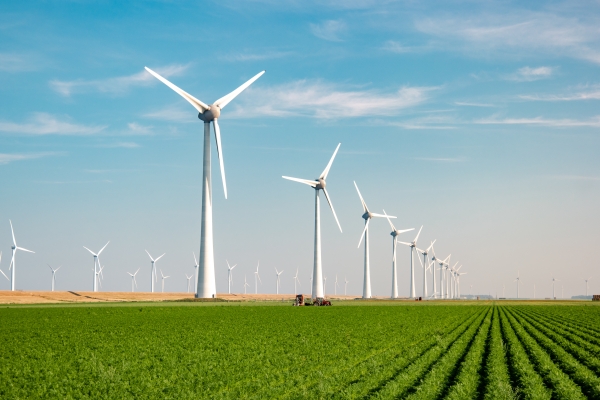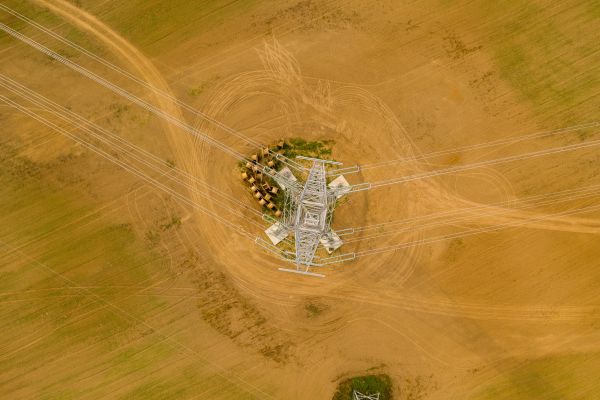The Impacts of COVID-19 and Sustainability on Energy Infrastructure

Northleaf's Jamie Storrow, Managing Director and Co-Head of Infrastructure, recently sat down with David Snow of Privcap Media to discuss the impacts of COVID-19 and sustainability on energy infrastructure. Below is an edited transcript of the podcast.
The COVID crisis has dramatically changed the use of energy around the world. How has that impacted the infrastructure investment opportunity?
When we think of energy infrastructure, we refer predominantly to midstream investments - gathering and processing for liquids and gases, pipelines and tank storage. What has happened with COVID is that, almost overnight in some jurisdictions, the demand for fossil fuel products has dropped extensively. That led to a commodity price war. Many investors have curtailed investing in energy infrastructure because of the significantly increased volatility in the energy sector. In some cases, there’s a reassessment of risk/return. I think we will see an acceleration of investors moving away from certain energy investments and into different types of ESG investing on the back of this very unique time.
There was trouble in the oil and gas industry even before the COVID pandemic. The business models of many of these upstream companies were not working. Are you seeing seller motivations in the current market because of the increase in distress?
We are probably seeing more opportunities for new investment in the energy sector because of exactly that. Large international, multi-product energy companies might have some fixed assets that are either “non-core” or that can be sold and leased back. We are seeing some of these companies looking to sell pipelines, storage terminals and processing units - so they can use the proceeds to de-lever their balance sheets, or in some cases, put the proceeds into higher returning product lines or business activities. But overall, we are seeing a lot of caution in the industry right now in the energy infrastructure sector.
What do you view as the major categories of energy infrastructure?
Energy infrastructure is very country-specific. In the U.S. - which we view as the largest energy infrastructure market - there are substantial gathering and processing assets. These assets process gas and liquids that cover a certain acreage. Pipelines also are quite large in the U.S., as is tank storage. The market differs as you move to Canada, Western Europe and Australia. There is gathering and processing in Canada, there is a bit of tank storage, but there is far less in the pipeline space with many of the pipelines being owned by large public companies. In Western Europe, there are pipeline and tank storage opportunities but there’s little in gathering and processing because they don't have the resource bodies that you see in the U.S. and Canada.

There’s a growing trend in the energy space called electrification. What does this mean?
Electrification from an infrastructure investment perspective is refering to moving away from using fossil fuels for transport and industrial equipment and moving towards using renewable electricity to power these activities. For example, moving a country towards electric vehicles of various types would be electrification, with the end goal being to lower carbon emissions.
How about the trends in industrial activity?
Industrial facilities are large users of different types of energy. Over time, converting to electric boilers and pumps, along with industrial electric vehicles will help move away from industrial fossil fuel usage. We have also seen some industrial companies investing in renewable power to provide some direct ownership of renewable electricity. In addition, certain facilities can introduce carbon capture technology to effectively sequester carbon dioxide.
Speaking of fossil fuels, the use of coal has been in steep decline. What do you think will be the impact as coal continues to fall out of favour as a source of energy?
The impact of the decline in coal use depends on the country and, in some cases, the region in question. Europe has been moving away from coal for quite a while, and there is relatively little coal left there – only 10-15% of electricity across the EU is generated from coal. The U.S. is catching up to Europe in this regard. In the U.S., about 20-25% of electricity is produced by burning coal, and on a declining basis. Canada is currently less than 10%. Coal is being replaced with a mix of natural gas and renewable power. Natural gas is relatively inexpensive, and generation equipment is well understood. Renewable technology is improving and becoming more cost-effective. Battery technology is catching up - it is expensive but better understood than in the past. But then, in parts of Asia, coal is highly prevalent. That prevalence is underpinning a lot of the global coal map. In Australia, well over half of the electricity generation is coal-based, which is very different from Western Europe. That is changing, but it is expensive to change.
Setting aside the COVID crisis, what are you most excited about as a long-term investor in energy infrastructure?
We are a mid-market manager, so we are investing in sub-billion dollar enterprise value investments, mostly in the U.S., Canada, Australia and a few European countries. We invest in processing and gathering units. We see a lot of opportunities in tank storage, in part because tanks can hold a variety of products which provides future optionality. They can hold traditional fuels, but they can also hold chemicals, in some cases, which are used for all sorts of industrial purposes. Tanks can hold edible oils and can move into growth products such as biofuels.
In addition, renewable power is active - renewables are not going anywhere. They are becoming more affordable and better understood, and are getting better integrated into transmission systems. And the move to couple renewable power with batteries is progressing. Batteries are still expensive and are at an early stage, but they aren’t a dream anymore; they are a reality. Renewables combined with battery storage are areas that we are going to continue to spend a lot of time in.

